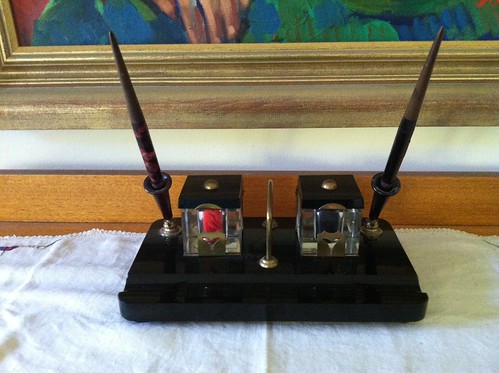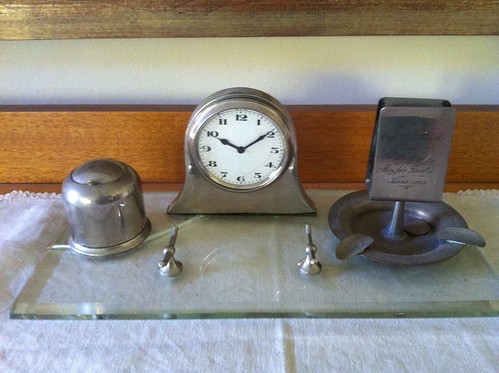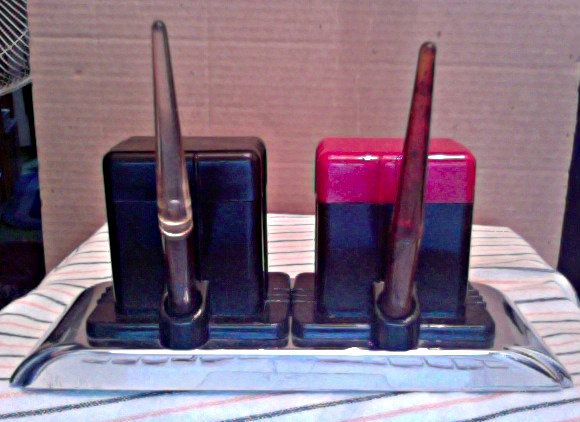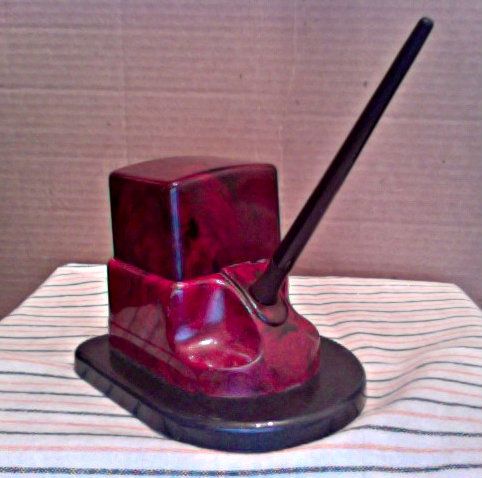Widebrim
I'll Lock Up
- Messages
- 6,557
As far as I know, there is no inkwell thread on this forum, and since inkwells were an integral part of most peoples' lives during the Golden Era, let's start one.
20th century, institutional (common/public use) inkwells were produced by many different companies, some of the more famous being Esterbrook, Morriset, Sengbusch, Fount-O-Ink, and Carter's. Materials used included metal, bakelite, plastic, ceramic, and glass, and they came in just about every price range. They were found in classrooms, home desks, banks, offices, post offices (officially until 1957), on ships, on military field desks, and almost everywhere else. Some had to have the ink poured into them, whereas some used bottles of ink screwed into the base. What gives an inkwell a foot up on a fountain pen is the ink supply; depending on one's writing habits, an inkwell could go far longer without re-filling than a fountain pen (the latter's advantage being its portability.) As far as I know, the last American inkwells were produced in the early-1960s, although their termination date might have been later in other countries. (As late as the end of the 1970s, at least here in the L.A. area, you could still find NOS inkwells languishing in stationery stores.)
So, what inkwells do you have do show off? I'll begin with one that I currently have on top of my classroom desk:
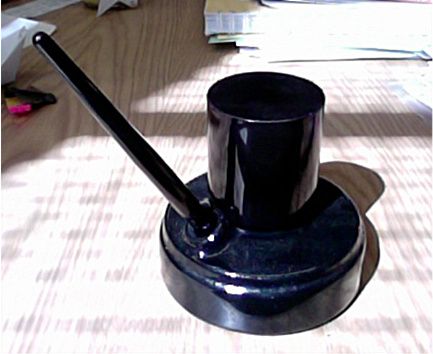
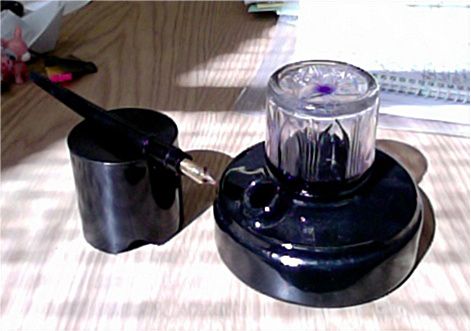
This is a Fount-O-Ink inkwell, produced around 1940 (it has a South African patent date of 1939), in the city of Los Angeles. The company existed from at least the late-1930s until at least the mid-1950s (I found a mid-'50s, high-end NOS model in a stationery shop in the late '70s). As can be seen, the bottle was screwed into the base, so one had to either buy a new bottle of the company's ink, or use a small funnel to pour the new ink into the used bottle. The base is heavy ceramic, whereas the bottle cover appears to be celluloid in nature. Utilitarian, but still nice-looking.
20th century, institutional (common/public use) inkwells were produced by many different companies, some of the more famous being Esterbrook, Morriset, Sengbusch, Fount-O-Ink, and Carter's. Materials used included metal, bakelite, plastic, ceramic, and glass, and they came in just about every price range. They were found in classrooms, home desks, banks, offices, post offices (officially until 1957), on ships, on military field desks, and almost everywhere else. Some had to have the ink poured into them, whereas some used bottles of ink screwed into the base. What gives an inkwell a foot up on a fountain pen is the ink supply; depending on one's writing habits, an inkwell could go far longer without re-filling than a fountain pen (the latter's advantage being its portability.) As far as I know, the last American inkwells were produced in the early-1960s, although their termination date might have been later in other countries. (As late as the end of the 1970s, at least here in the L.A. area, you could still find NOS inkwells languishing in stationery stores.)
So, what inkwells do you have do show off? I'll begin with one that I currently have on top of my classroom desk:


This is a Fount-O-Ink inkwell, produced around 1940 (it has a South African patent date of 1939), in the city of Los Angeles. The company existed from at least the late-1930s until at least the mid-1950s (I found a mid-'50s, high-end NOS model in a stationery shop in the late '70s). As can be seen, the bottle was screwed into the base, so one had to either buy a new bottle of the company's ink, or use a small funnel to pour the new ink into the used bottle. The base is heavy ceramic, whereas the bottle cover appears to be celluloid in nature. Utilitarian, but still nice-looking.








